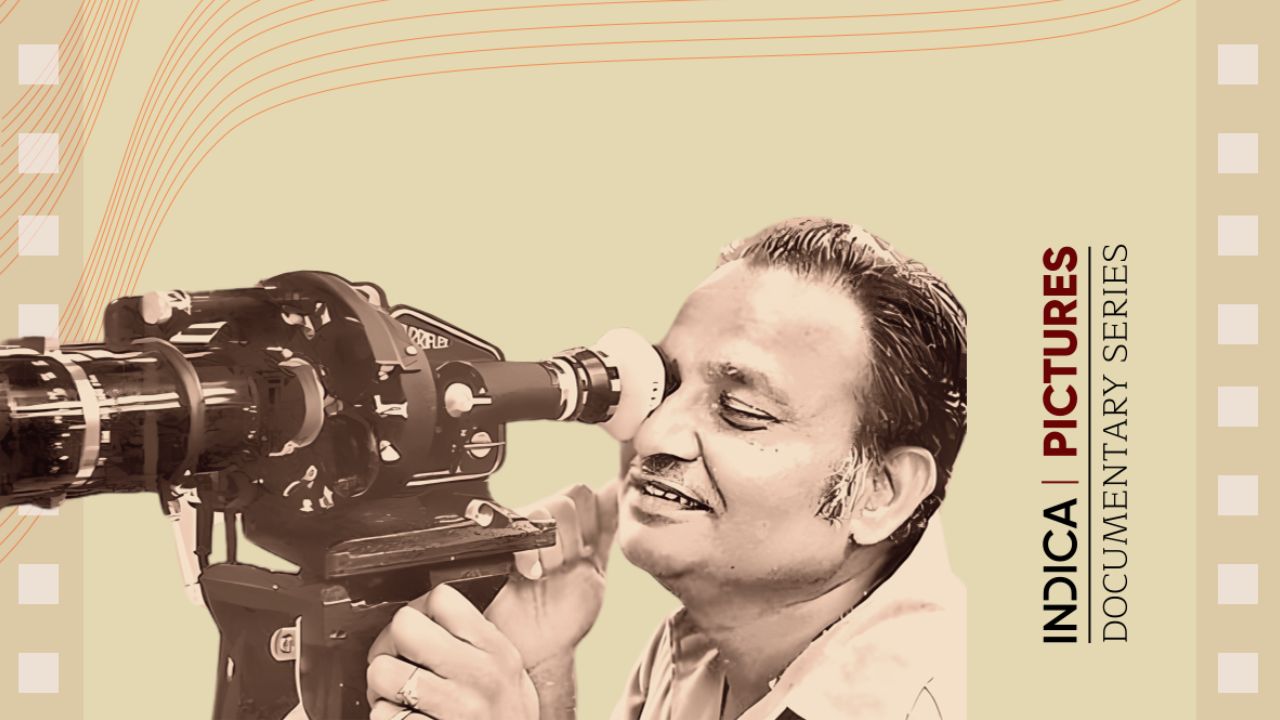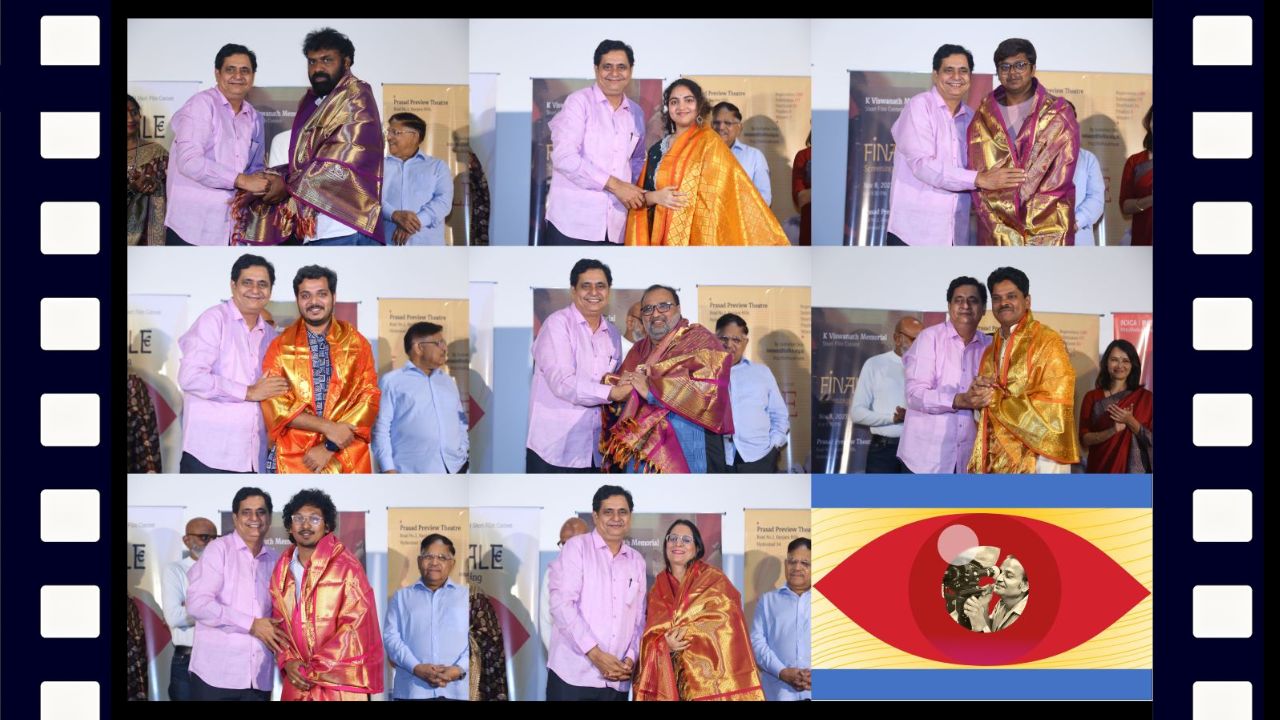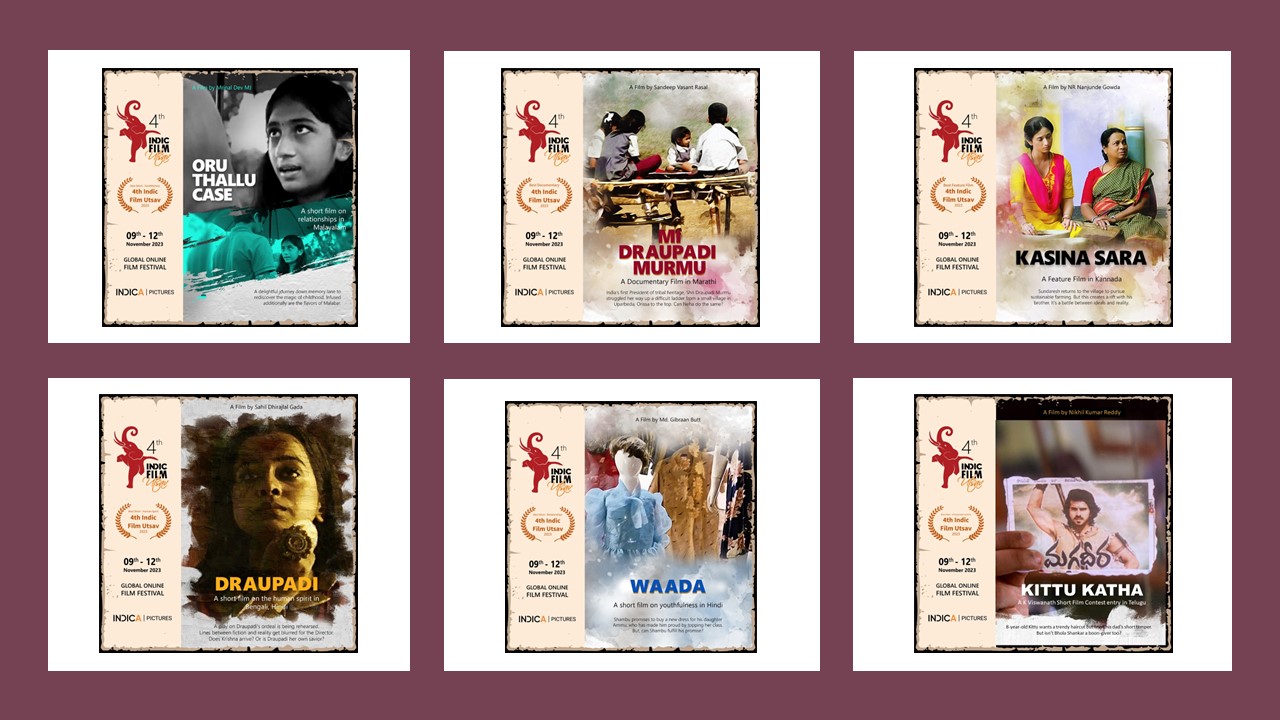B Suresh Kumar’s film the ‘School Bell’, produced by the Films Division-NFDC, Government of India, has won acclaim for its theme of eradication of child labour and education in a novel way. Also it is a production that highlights and pays attention to Sound in films, something that has often been de-prioritised by film makers in their quest for the perfect story and visuals. It won the Best Ultrashort Film, Audience Choice in the Indica Pictures film festival 2021.
Suresh Kumar, after graduating in Visual Communication, did a Diploma in Film Technology and Television Production. He specialised in Sound Recording from the Film & Television Institute of Tamil Nadu in Chennai, India and worked as a Sound Engineer and Recordist for more than 400 Indian features, short films and documentaries before joining Films Division , Government of India, Ministry of information and Broadcasting. In this interview, he speaks about how he has brought his experience as a sound engineer to his directorial films.
How did your experience in sound recording transition to film making? How do the two go hand in hand?
Actually, we call it AV i.e. audio comes first and then video. But in Indian Films, I have observed audio is given least importance. As a Sound Recordist, I was often humiliated on shooting locations, where the Directors I worked with cared little about audio. They concentrated only on the cameraman and his visuals. This humiliation made me become a Director and I decided that I will make my films with sound as one of the main features, thereby elevating the narration of the film through atmospheric real sounds.
I started my Direction venture with a musical documentary namely “Gourd to chord”. This is a brief half an hour documentary on the making of Indian musical string instruments like the Veena, Sitar, Tanpura, etc., using Gourd as the base. I used only location sounds and not even a single sound was added later. This documentary was well received giving me confidence I was right. I then directed a 3 min short Fiction film only with atmospheric location sounds called School Bell. Both films were recognized at national and international film fests.
How did your stint with Films Division help to hone your documentary film skills?
Films Division is an produces documentaries, short fiction and animation films. Working for more than 23 years as a Sound Recordist in Films Division, I gained lots of experience in all genres. I was posted to Kolkata after working in Mumbai, where I got the golden opportunity to work under four time national award winner Joshy Joseph, who was a Director in Kolkata. While accompanying him in one of his Docufiction filmshoots for “Safar- A Journey of an Indian Farmer’ in Odisha, during the silent shot takes, I went into the nearby forest area to record bamboo scratching sounds which were breathtaking whenever the wind was blowing.
I played the bamboo scratching sound to Joshy during our lunch break. He was so taken up with it that he took a shot of a farmer sleeping in the forest in a rope cart from a crane. This became the first shot of the film Safar, in order to introduce the bamboo scratching sound. He was the first person in the entire Industry who understood the value of sound and the value of a Sound Recordist. Subsequently I became permanent Sound Recordist in all Joshy’s films and he became my permanent Director to work with. I am grateful to him for respecting and honoring me and my sound.
What inspired you to make the School Bell and why did you choose Bengali as the medium? Seems to be very Satayajit Rayish.
I am from Chennai and I joined Film Institute of Tamil Nadu in Adyar to study Sound Recording and Sound Engineering in 1989. During my three years of course, whenever I use to see a small boy or a small girl working in a tea shop washing tea glasses or in a hotel cleaning plates, I use to feel bad for them and wanted to free them immediately and take them directly to a school like a hero does only in Films. But, I was helpless. So, I scripted a short film about Child Labor using a Famous Tamil Prayer song “Neerarum Kadalodutha Nilamadanthai Ezhilozhugum Seerarum Vadanmena Thighazh Bharatha Kandamithil.” But, it was not easy to make a film in the 1990s as the format was 35mm.
Hence, I kept the script to myself, understanding the ground reality of making a film is a mammoth task for a middle class person. Then, I joined the Tamil film industry and worked for more than 400 films before joining Films Division Kolkata as a Sound Recordist. This became my turning point, as I was encouraged and appreciated by both my directors Rajiv Kumar and Joshy. In Kolkata, we use to attend film festivals regularly at Nandan complex where we became cinephiles. I got the support of my two directors, when I wanted to direct my first documentary. As my confidence grew, I changed my prayer song from Tamil to Bengali, realizing that child labour is a universal problem of India. I decided not to have any dialogue but to play with sound, visuals and emotions. That’s how Neerarum Kadalodutha became Anondo Loke Mongola Loke. The boy Aathithya whom I cast is a Tamil boy, lived next to my apartment in Kolkata. To my surprise the location of the school in which I shot School Bell is called Boral, where Pather Panchali was shot by master film maker Satayajit Ray.
What impact did you hope to make with the production of this film.
It had been my dream for over 30 years to create awareness about eradicating child labour through the medium of films. I have seen many short films on child labour before starting on my film. They were mostly pedantic with loud commentary or voice overs or scrolling text like in power point presentations. I wanted to convey the problem through the eyes of the child without a single dialogue or separate music. I used the Prayer song in Bengali as the basic sound track of the entire film and used atmospheric effects. This clicked and people were moved by the sound scape of the film which triggered emotions as I had hoped.
The School Bell is set in modern India. How do we reconcile the fast paced developments in space, medicine, industry with a situation where the right to education is still something not adequately addressed. Your other film Arithaaram is very folksy. How does the koothu community cope with modernisation and how did you manage to capture this?
Just as we have eradicated polio fully from our life, if we could eradicate child labour we can be proud about developments in space, medicine, industry, etc.
Due to the advancement in technological developments in cocial media, the future of Therukoothu (Therukoothu in Tamil, is an ancient art, where artists play songs with dance and music in storytelling of the epics) is bleak. It is a folk art which originated from the early Tamil country and has slowly started diminishing and the survival of the Therukoothu artists became a question mark. This film captures one such artiste and his mental agony.
Video Excerpt of the Interview





